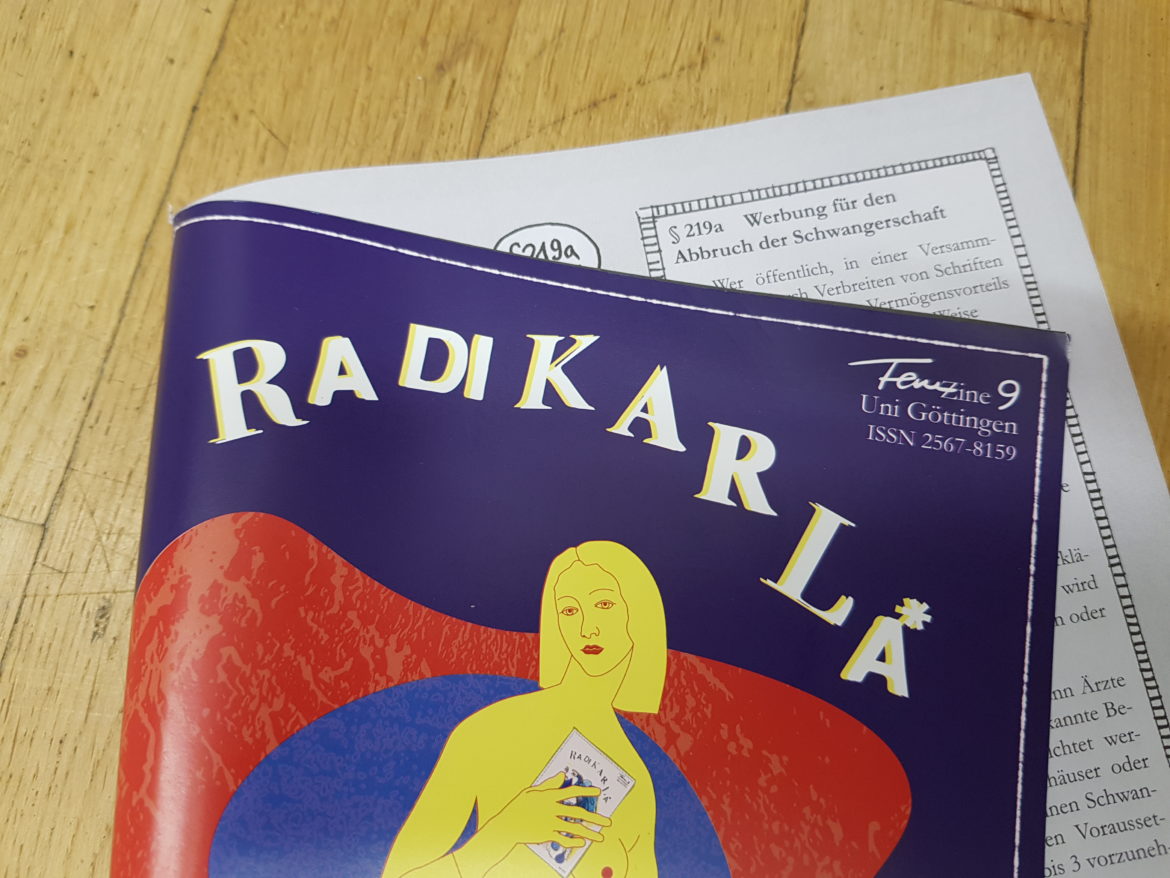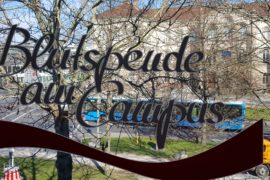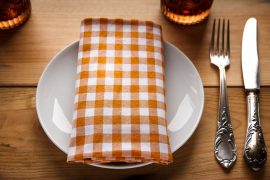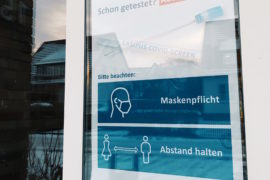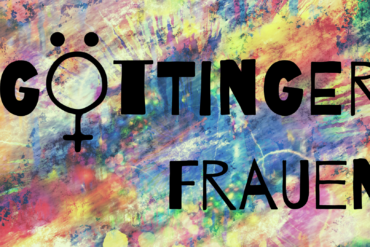Pattering rain on the windows, two teapots in front of me, one with black tea and the other with peppermint. Colorful magazines are lying next to them. Merle and Janice were looking forward to our meeting, they tell me. I was, too, especially since I am curious about their feminist zine they brought back to life two years ago. What I was unaware of before our talk: The Radikarla* is a treasure from the early 90s only found by accident…
Merle and Janice, both students of social sciences, were working at the AStA, when Victoria Hegener, equal opportunity commissioner of the Faculty of Humanities, found old issues of the zine in early 2017. Self made drawings, elaborate montage layouts designed by photocopying everything together, and feminist texts written by female students; more than two decades had passed since the three issues of the „first Radikarla wave“. Everyone immediately agreed that there is a lot of potential: “When we first held the Radikarla in our hands we were thrilled and knew we will have to continue their legacy. This zine cannot get lost in the archives.“ I can still see the excitement sparkle in Merles eyes. With new issues came a few updates –for example the asterisk for gender neutrality. It stands for the contributors’ inclusivity that enables everyone regardless of their gender or sexual orientation to write articles, and, on top of that, for the broad readership. The Radikarla* is not (anymore) solely specializing on female and lesbian issues and experiences but opens the discourse for everyone who is interested in topics concerning queerness, gender equality, sexuality, feminist endeavor etc.
In the current winter term 2019 and the following summer term of 2020, the Radikarla* receives funding by the university’s Creativity and Studies program, which supports interdisciplinary projects ideas by students; a financial aid, that secures two more issues, making it eight „second Radikarla* wave“ issues in total. Nevertheless, their future remains uncertain. „The biggest obstacle are the printing costs. We don’t get paid for our work, so the funding is essentially for printing the zine. We still have to figure out how everything will develop over the next months.“ I personally enjoy reading the Radikarla* very much. Especially their candidness concerning critical but also sensitive topics such as abortion or sexual violence makes it an important medium for exchange, support and finding solutions.
Their first issue published in October 2017 touched on subjects like foodshaming, reproductive medicine, and, of course, the rediscovery of the Radikarla*. In the following two years they published five more issues that continue to attract my eyes with their colorful covers everytime I pass a magazine shelf of the university. Back in the 90s, their goal was to bring together feminists and share experiences, discuss challenging boundaries and talk about queer topics –all in all issues, which don’t lose their topicality. That’s why the Radikarla* still aims to promote critical discourses. While trying to hold on to secure a certain social scientific approach, they abstain from an academic style of writing as Janice explains to me: „We want to bring topics, content and discussions from class rooms into a more accessible form, so a broader audience has a chance to understand it without necessarily having the theoretical background.“ By addressing a broader mass they hope to also reach people outside of the feminist bubble that is already interested in this exchange. That’s why they always love to welcome new editors, who would like contribute with their new impulses, creative ideas and personal stories. These new views, different backgrounds and unique perspectives turned and continues to turn the Radikarla* into the progressive zine it is. „We all come from different disciplines, which makes our talks and discussions always very insightful and inspiring.“
During our conversation my urge to write a piece for the Radikarla* myself grew stronger and stronger. I’d be able to pick my own topic, discuss it in editorial meetings and I could even remain completely anonymous in the whole process if I wanted to. I’m not sure whether I’ll actually do it (oh if there were more than 24 hours in a day…) but it sure sounds appealing to me. As I have finished my cup of tea, our cozy afternoon comes to an end and I have to face the cold and wintery weather again. Before I leave, Merle enthusiastically hands me all of their six „new“ issues, some of them I have read, some I haven’t. At least now I know how I want to spend the rest of this rainy Friday afternoon.
Don’t be sad in case you didn’t have the chance to grab one of the much sought-after issues. You can find all of them in electronic form here (in German).

